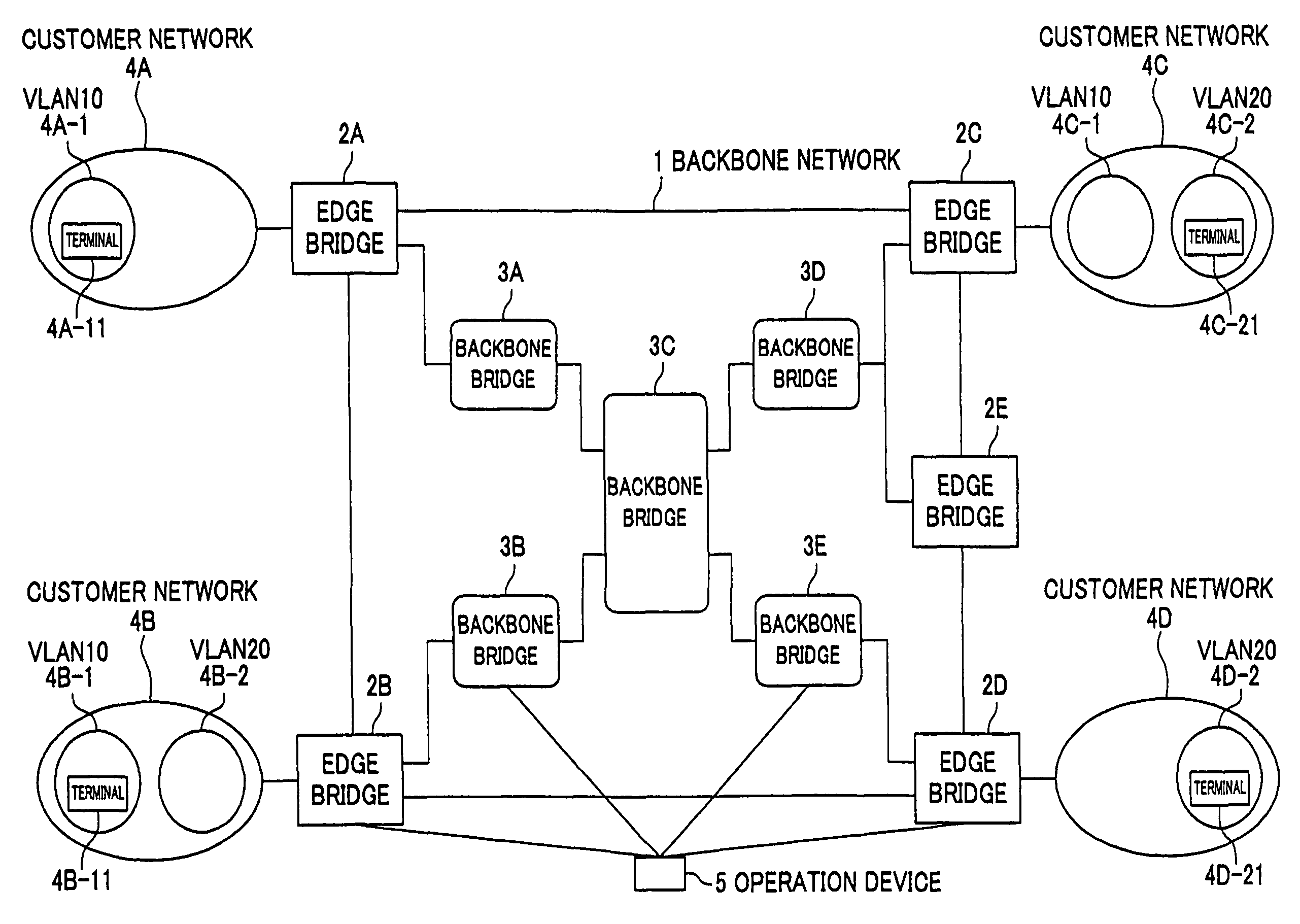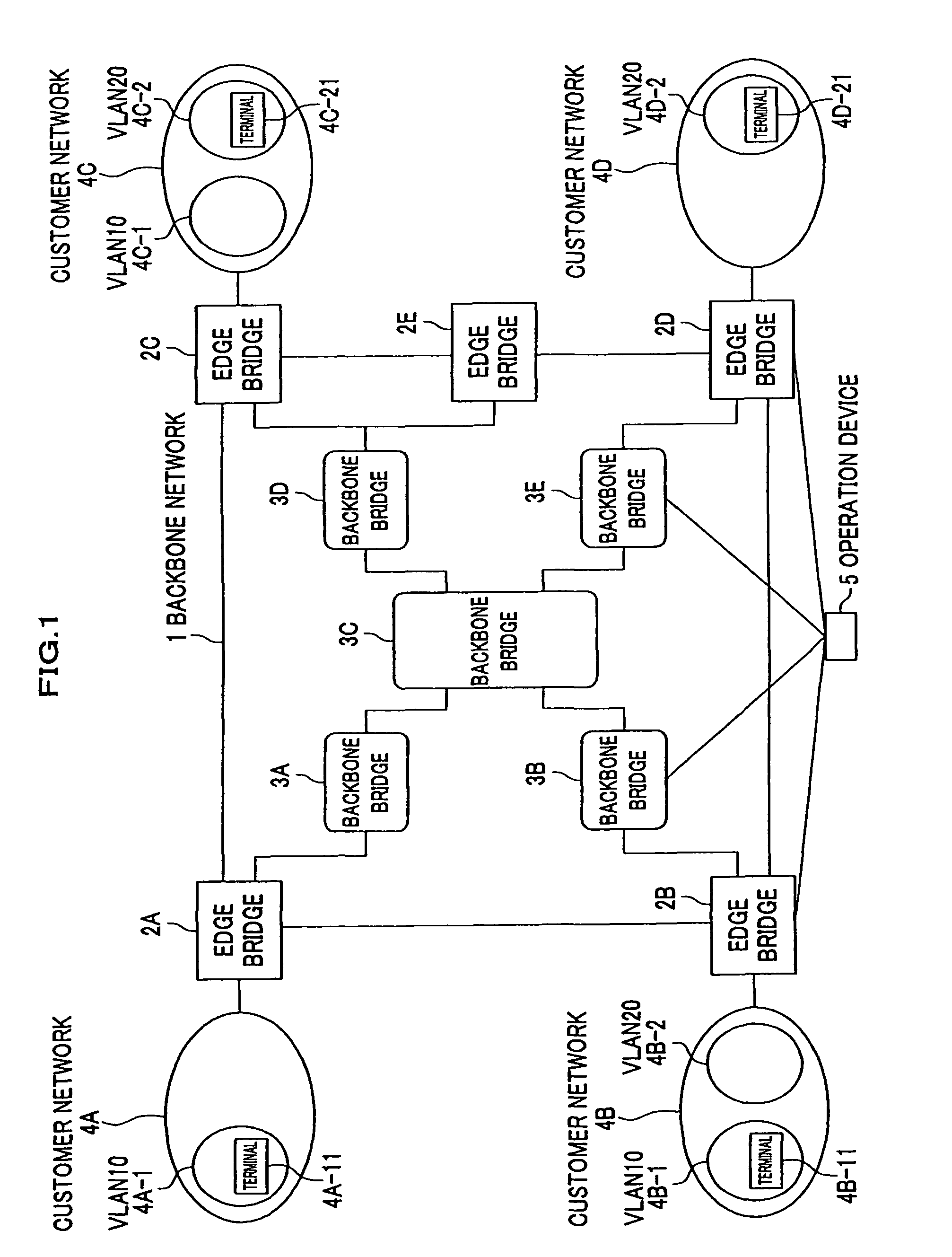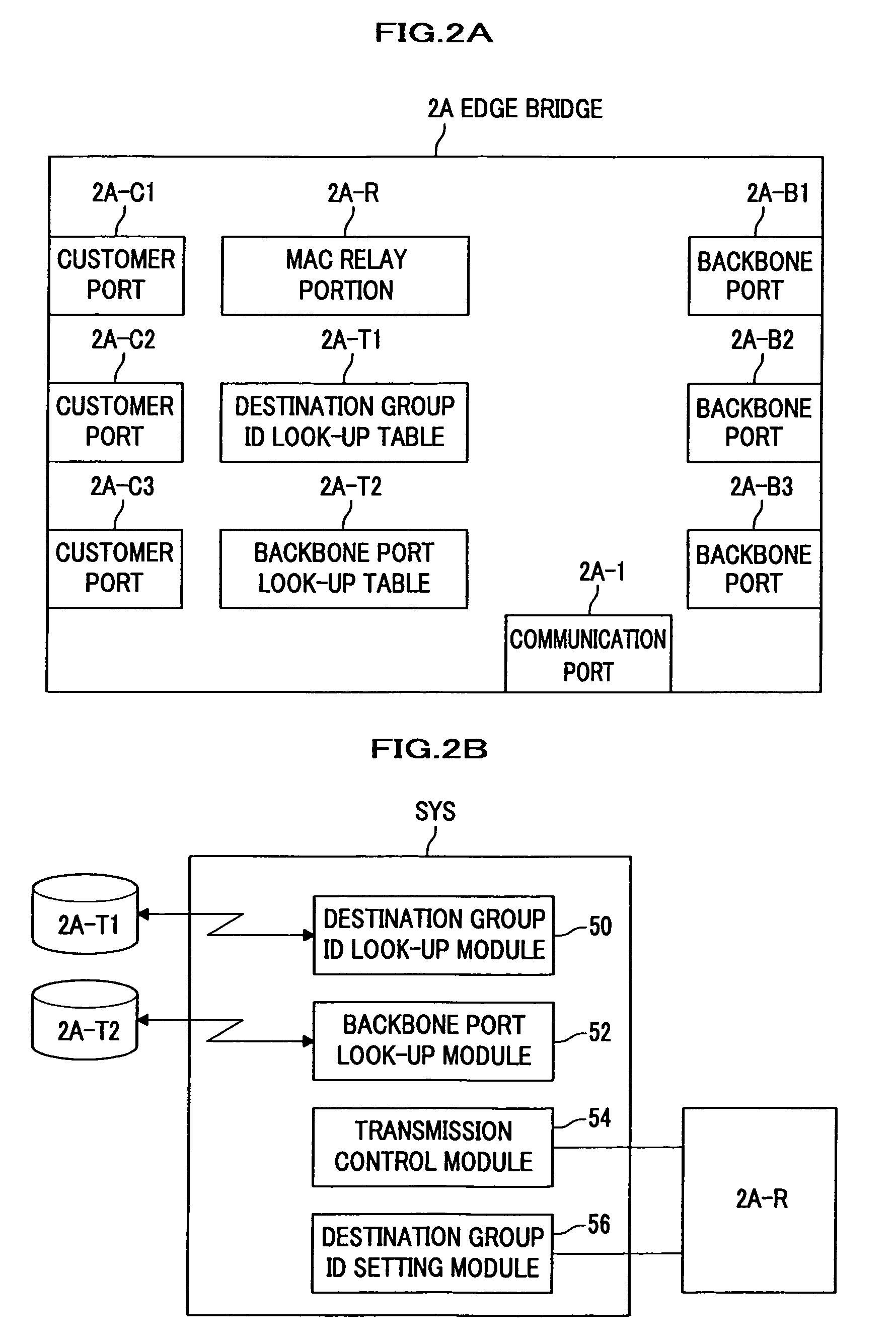Flooding reduction method
a technology of flood reduction and flood prevention, applied in data switching networks, frequency-division multiplexes, instruments, etc., can solve problems such as increased probability, network receiving mac frames that are unnecessary, and interconnection bridge bands that may be compressed, so as to reduce flooding in the backbone network
- Summary
- Abstract
- Description
- Claims
- Application Information
AI Technical Summary
Benefits of technology
Problems solved by technology
Method used
Image
Examples
first embodiment
=Edge+Core+Ops+B−DA+CVLAN Filter
[0063]Referring to FIG. 1, a flooding reduction method as a MAC frame transfer method and a flooding reduction apparatus according to a first embodiment (embodiment 1) of the invention will be described as a more specific structural example in the following.
[0064]FIG. 1 is a block diagram showing an exemplary arrangement of a network to which a flooding reduction method according to the first embodiment of the invention is applied. As shown in FIG. 1, a backbone network 1 according to the embodiment comprises a plurality of edge bridges 2A through 2E and a plurality of backbone bridges 3A through 3E. The backbone network 1 is connected with customer 4A via edge bridge 2A, with customer 4B via primary edge bridge 2B, with customer 4C via primary edge bridge 2C, and with customer 4D via edge bridge 2D. Also, an operation device 5 is connected with all edge bridges 2A through 2E and all backbone bridges 3A through 3E of the backbone network 1. Each of th...
second embodiment
=Edge+Core+Ops+B−DA+Multicast Filter
[0084]Referring to FIG. 6, a flooding reduction method as a MAC frame transfer method and a flooding reduction apparatus according to a second embodiment (embodiment 2) of the invention will be described in the following.
[0085]FIG. 6 shows an exemplary arrangement of a network according to the present invention. Detailed description of the same elements as those of the first embodiment shown in FIG. 1 will be omitted. The structures of edge bridges and backbone bridges are identical to those of the first embodiment and accordingly will not be detailed.
[0086]In FIG. 6, to a customer network 4A, there is connected a terminal 4A-31 which receives a multicast group 10. To a customer network 4B, there is connected a terminal 4B-31 which receives a multicast group 10. To a customer network 4C, there is connected a terminal 4C-31 which receives a multicast group 10. To a customer network 4D, there is connected a terminal 4D-31 which does not receive a mu...
PUM
 Login to view more
Login to view more Abstract
Description
Claims
Application Information
 Login to view more
Login to view more - R&D Engineer
- R&D Manager
- IP Professional
- Industry Leading Data Capabilities
- Powerful AI technology
- Patent DNA Extraction
Browse by: Latest US Patents, China's latest patents, Technical Efficacy Thesaurus, Application Domain, Technology Topic.
© 2024 PatSnap. All rights reserved.Legal|Privacy policy|Modern Slavery Act Transparency Statement|Sitemap



